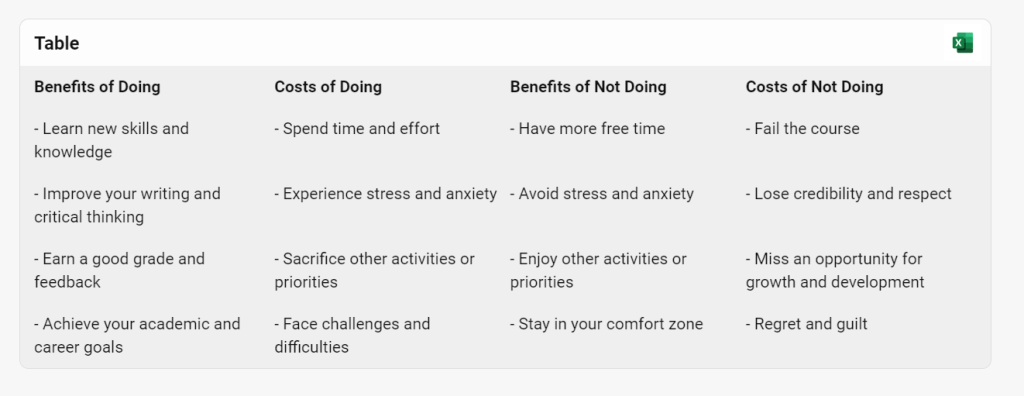Procrastination is a common problem that affects many people, especially those who have to balance work and study. Procrastination can lead to poor performance, stress, anxiety, and low self-esteem. Fortunately, there are some effective strategies that can help you overcome procrastination and achieve your study goals as a worker. Here are some tips that you can apply to your own situation.
Understand the causes of your procrastination

Procrastination is not a sign of laziness or lack of motivation, but rather a coping mechanism to avoid unpleasant or challenging tasks, overcome it with these:
– Fear of failure or success: You may procrastinate because you are afraid of not meeting your own or others’ expectations, or because you are afraid of the consequences of succeeding, such as increased responsibility or competition.
– Lack of interest or relevance: You may procrastinate because you find the task boring, frustrating, or irrelevant to your goals or values.
– Lack of clarity or structure: You may procrastinate because you are not sure what to do, how to do it, or when to do it. You may also lack a clear plan or a realistic schedule for your task.
– Perfectionism: You may procrastinate because you want to do everything perfectly and avoid any mistakes or flaws. You may also set unrealistic standards or goals for yourself or your work.
Reverse the triggers of your procrastination
Once you know the causes of your procrastination, you can try to reverse the triggers that make you want to avoid or delay your task with these:
– If you are afraid of failure or success, try to focus on the process rather than the outcome. Remind yourself that making mistakes is part of learning and that success is not a threat but an opportunity. You can also seek feedback and support from others who can help you improve your skills and confidence.
– If you lack interest or relevance, try to find ways to make your task more enjoyable or meaningful. You can use rewards, incentives, or gamification to motivate yourself. You can also connect your task to your personal or professional goals or values, or to the benefits that it will bring to you or others.
– If you lack clarity or structure, try to break down your task into smaller and more manageable steps. You can also create a detailed plan or a realistic schedule for your task, and set specific deadlines and milestones. You can also use tools such as calendars, reminders, or checklists to keep track of your progress and stay organized.
– If you are a perfectionist, try to accept imperfection and embrace uncertainty. Remind yourself that perfection is impossible and that good enough is often enough. You can also set realistic and flexible standards or goals for yourself or your work, and revise them as needed. You can also practice self-compassion and celebrate your achievements, no matter how small.

Start with the easiest or most important part
Another tip to overcome procrastination is to start with the easiest or most important part of your task. This can help you overcome the initial resistance and inertia that prevent you from getting started. It can also help you build momentum and confidence as you complete the first part of your task and see the results. You can then use this as a motivation to continue with the rest of your task.
To start with the easiest or most important part of your task, you can use the following strategies:
– Prioritize your task according to its urgency and importance. You can use the Eisenhower matrix to help you decide which part of your task to do first, second, third, and so on. You can also use the Pareto principle to help you identify the 20% of your task that will produce 80% of the results.
– Chunk your task into smaller and more manageable parts. You can use the SMART criteria to help you define each part of your task in terms of its specificity, measurability, achievability, relevance, and timeliness. You can also use the Pomodoro technique to help you work on each part of your task for a short and focused period of time, followed by a short and relaxing break.
– Start with the part of your task that you find the easiest or the most enjoyable. This can help you overcome the fear or boredom that may cause you to procrastinate. It can also help you create a positive association with your task and increase your interest and engagement. You can then use the part of your task that you find the most difficult or the least enjoyable as a reward or incentive for completing the easier or more enjoyable part.
List the costs and benefits of your task
Another tip to overcome procrastination is to list the costs and benefits of your task. This can help you weigh the pros and cons of doing or not doing your task, and evaluate the consequences of your actions or inactions. It can also help you increase your motivation and commitment to your task by highlighting the positive outcomes and minimizing the negative ones.
To list the costs and benefits of your task, you can use the following steps:
– Write down the name of your task and the deadline for completing it.
– Draw a table with four columns and label them as follows: Benefits of Doing, Costs of Doing, Benefits of Not Doing, Costs of Not Doing.
– Fill in each column with as many items as you can think of. For example, if your task is to write an essay for a course, some of the items could be:

– Compare the items in each column and see which ones are more important or relevant to you. You can also assign a score or a weight to each item to quantify its value or impact.
– Add up the scores or weights of each column and see which one is higher. The higher the score or weight, the more compelling the reason to do or not do your task.
– Use the results of your analysis to motivate yourself to do your task or to reconsider your decision to not do your task.
Eliminate or minimize distractions
Another tip to overcome procrastination is to eliminate or minimize distractions that may interfere with your focus and concentration on your task. Distractions can come from both external and internal sources, such as noise, people, devices, apps, websites, emails, messages, notifications, thoughts, emotions, or impulses. Distractions can reduce your productivity, quality, and efficiency of your work, and increase your stress, frustration, and errors.
To eliminate or minimize distractions, you can use the following strategies:
– Create a conducive environment for your work. Choose a quiet, comfortable, and well-lit place where you can work without interruptions or disturbances. You can also use tools such as headphones, earplugs, curtains, or signs to block out or reduce the noise or visibility of potential distractions.
– Manage your devices and apps. Turn off or mute your phone, tablet, computer, or other devices that are not essential for your work. You can also use tools such as airplane mode, do not disturb mode, or app blockers to prevent or limit the access or usage of distracting apps, websites, emails, messages, or notifications. You can also set a specific time or interval to check or respond to these sources of distraction, such as during your breaks or after your work.
– Control your thoughts and emotions. Be aware of your internal distractions, such as wandering thoughts, negative emotions, or impulsive urges. You can use tools such as meditation, mindfulness, breathing exercises, or affirmations to calm your mind and body, and to focus your attention on your task. You can also use tools such as journals, lists, or sticky notes to write down or record your thoughts or emotions, and to remind yourself of your goals or priorities.
In conclusion, the more you use these tips, the easier and more natural they will become, and the more productive and successful you will be.




p820cu